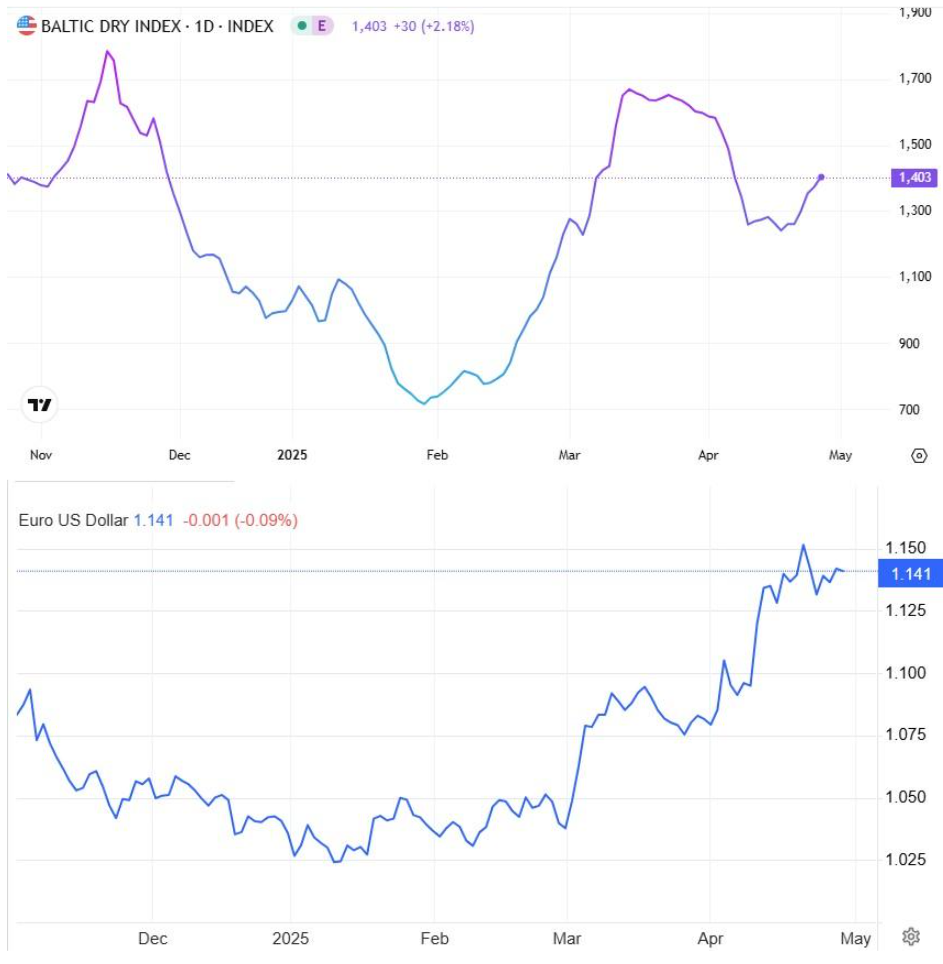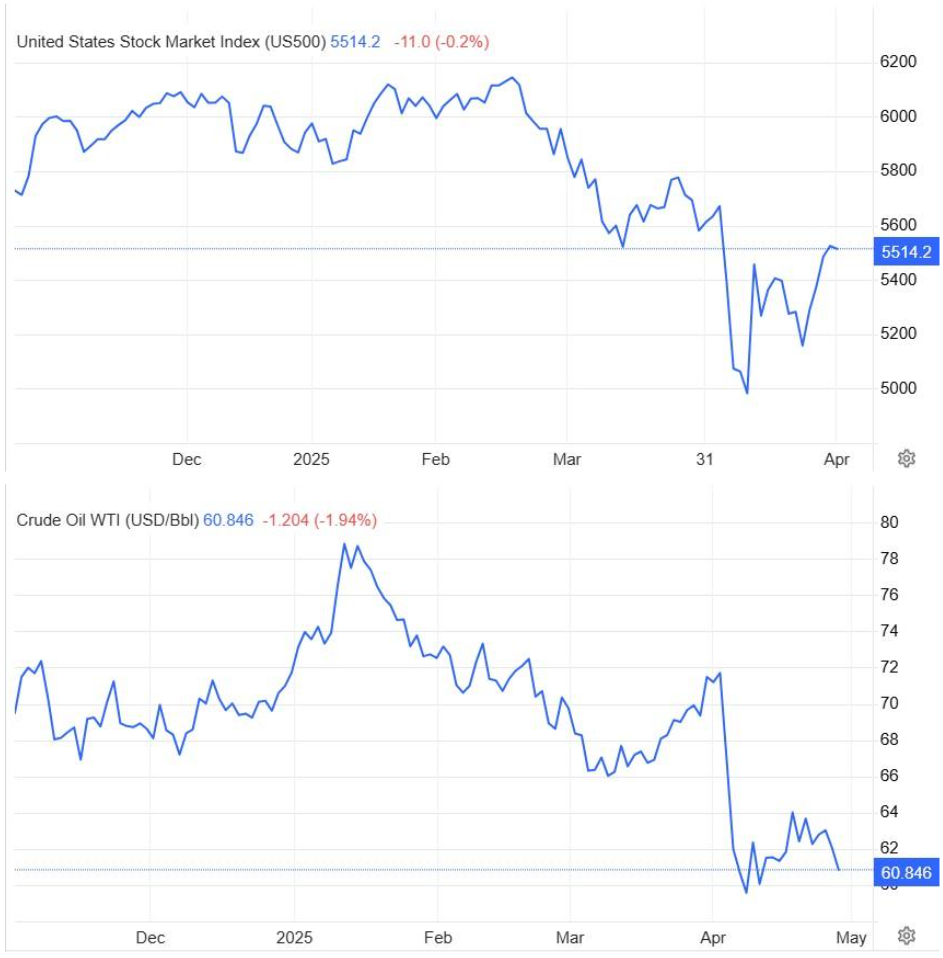The first 100 days of the Trump administration come to a close amid uncertainty and heightened expectations. Despite announcements of tax cuts and deregulation, financial markets are moving on a knife’s edge—trapped between the fear of trade wars and the hope of economic stimulus. As the investment community questions whether this new political reality can sustain a lasting rally, the focus shifts to the government’s next moves and whether this period of uncertainty will evolve into renewed momentum or prolonged pressure.
There are many questions, and in this article I will attempt to analyze the new “big picture” – a reality that may form the foundation for developments over the coming months. Let’s begin with a unique feature of these 100 days, as highlighted by the Wall Street Journal: since 1928, the S&P 500 has never recorded a 10% drop within the first 100 days of a new U.S. president’s term. These 100 days also include the strongest one-day rise in U.S. stock indices, triggered by the 90-day extension of tariff enforcement—a phenomenon not seen since the 2008 financial crisis, when quantitative easing (QE) measures were introduced.
Another notable statistic is the signing of over 200 executive orders aimed at reducing regulations that had been slowing innovation and investment, particularly in the energy and business sectors. In my view, this is where the essence of Trump’s approach lies: the attempt to make the U.S. economy more self-sufficient and inward-looking. It is a difficult bet—especially when factoring in the challenges of debt and liquidity. There was neither the time nor the luxury to pursue a different course, and throughout my analysis, I account for the enormous public and private debt burden, all within an environment of elevated interest rates.
As I’ve noted in previous articles, major economic “resets” tend to occur through structural changes implemented over short timeframes, allowing for control over excesses while delivering rapid economic returns. This is why I’ve argued that the announced tariffs were never intended to remain beyond the 90-day extension. Instead, they acted as a lever to bring about swift structural shifts with immediate financial results. Trump had employed the tariff strategy in his first term, so the world was not unprepared. What has changed are the far more critical economic fundamentals currently at play in the U.S.
What Trump has effectively achieved, in my opinion, is the creation of a climate of fear and negativity—one he aims to exploit to America’s advantage by extracting financial relief and revenue through tariffs. The goal is to enhance competitiveness and improve the debt-to-GDP ratio.
However, this aggressive posture has also sparked global concern and instability. This is reflected in the elevated volatility of markets and corporate valuations. The same volatility is evident in the fluctuations across various sectoral indices, especially in the U.S. market.
Indicative volatility of key indices and sectors year-to-date (from yearly lows to highs):
Dow: 23.40%, S&P 500: 27.60%, Nasdaq: 35.70%,
Russell: 36.70%, DAX: 23.70%, Crude Oil: 46.50%,
Brent: 41.50%, EUR/USD: 13.50%, Russia RTS: 49.90%,
Bitcoin: 46.90%, US10Y: 6.60%.
Sectors:
Financials: 24.40%, Utilities: 13.30%, Materials: 24.40%, Industrials: 26.00%, Consumer Staples: 11.30%,
Health Care: 15.80%, Energy: 27.15%, Communication Services: 25.67%, Real Estate: 22.50%, Baltic Dry Index: 133.43%.
From the above, it’s clear that during this period we’ve experienced four months of intense volatility across all asset classes. For an investment advisor, this can be seen as a positive sign that the worst may be behind us—that what we witnessed was the result of a potential strategic reset characterized by sudden, unpredictable announcements. As I’ve written in previous articles, this may well be a Great Reset moment.
At the same time, significant opportunities are emerging. Any positive news from open fronts—be it tariff negotiations, the situation in Ukraine, tax cuts, or interest rate reductions—could ignite a powerful relief rally in the markets. This will be the true test of whether Trump is ultimately supportive of the stock market or not.
Developments and announcements from global leaders will continue for some time, as the geopolitical chessboard works to decode current moves and determine how each player can gain the most or minimize losses—economically and politically. Even small agreements or “temporary pauses” on tariffs with certain countries could be presented as victories in tough negotiations.
“We promised growth, prosperity, and pride. In just 100 days, we’ve taken the first major steps to return America to its rightful place—on top.”
This could be one of the central messages from President Trump as he reviews his administration’s first 100 days.
Opportunities abound, and valuations remain at low levels—a combination that, even in 2020, rewarded the patient and strategic investor with substantial returns.

by Kotsiakis George









